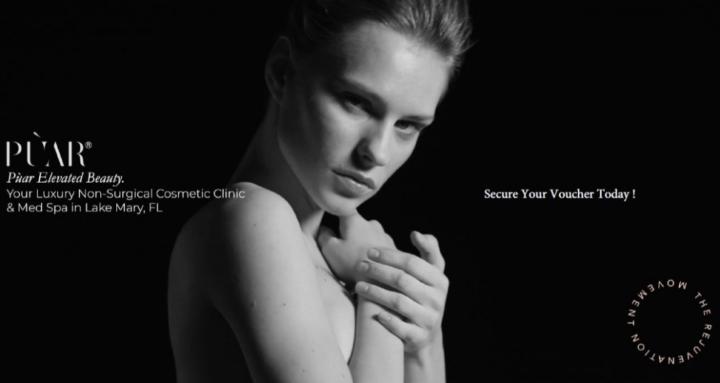Sep 1 • General discussion
Acne Scars Aren't Actually Permanent
You've tried everything—expensive serums, chemical peels, microneedling—yet those textural irregularities from past breakouts remain stubbornly visible. The frustration builds each morning when foundation settles into those depressions, creating an uneven canvas that no amount of concealer can perfect. These atrophic scars continue to undermine your confidence in professional settings and social situations.
By combining mono threads with fractional CO2 laser, you can achieve the smooth, even skin texture that has eluded you for years through a scientifically-proven approach that works with your skin's natural healing mechanisms.
Without addressing these scars now, they'll continue to deepen with age as collagen production naturally declines, making future treatment more challenging and requiring more aggressive interventions.
The Science Behind Dual-Action Collagen Stimulation
Collagen remodeling represents the foundation of effective scar revision, yet single treatments often fall short of optimal results. Most women experience disappointment with standalone approaches because acne scars require both immediate structural support and long-term tissue regeneration. PDO mono threads provide immediate scaffolding within the dermis while triggering your body's natural healing response. These medical-grade sutures, identical to those used in cardiac surgery, are strategically placed beneath scar tissue to break up fibrous bands that tether the skin downward. As the threads dissolve over 6-8 weeks, they stimulate sustained collagen production for up to 18 months. Critics often dismiss thread treatments as temporary, but research shows the collagen-building effects continue long after the threads absorb. Fractional CO2 laser works synergistically by creating controlled thermal columns that penetrate 2.5mm deep, removing damaged tissue layers while triggering intense collagen synthesis. The combination addresses both surface irregularities and deeper structural deficits that create the shadowing effect of acne scars. This dual approach targets multiple scar types simultaneously—rolling, boxcar, and shallow ice-pick scars respond exceptionally well to this protocol.
This comprehensive approach delivers both immediate improvement and progressive enhancement over several months, creating natural-looking results that integrate seamlessly with your existing skincare routine.
Treatment Precision Matters More Than Intensity
Customized treatment parameters determine success rates more than aggressive settings that can damage surrounding healthy tissue. Many practitioners use generic protocols that ignore individual scar patterns and skin characteristics, leading to suboptimal outcomes and unnecessary downtime. Fractional technology allows precise targeting of damaged areas while preserving healthy tissue bridges that accelerate healing. The laser creates microscopic treatment zones covering only 5-25% of the skin surface, allowing rapid recovery through cellular migration from untreated areas. Thread placement requires artistic precision—too shallow and collagen stimulation is inadequate, too deep and you risk visible bumps or asymmetry. Professional assessment identifies specific scar subtypes since ice-pick scars require different thread densities than broader boxcar depressions. Energy settings must account for skin tone, thickness, and healing capacity to prevent post-inflammatory hyperpigmentation. Some doctors rush treatments to maximize volume, but proper technique requires methodical assessment of each scar individually. Treatment intervals of 4-6 weeks allow optimal healing between sessions while maintaining momentum in collagen production. The stamping technique for laser delivery ensures even coverage without thermal buildup that can cause complications. Most patients benefit from 2-3 combined sessions, though deeper scars may require additional treatments for complete correction.
Professional expertise in treatment customization translates to superior results with minimal risk of complications or extended recovery periods.
Recovery Strategy Determines Long-Term Success
Post-treatment care influences final outcomes as much as the procedure itself, yet most patients receive inadequate guidance for optimal healing. The first 48 hours establish the healing trajectory—proper wound care, sun protection, and activity modification prevent complications that can compromise results. Thermal injury from the CO2 laser requires specific aftercare protocols including gentle cleansing, prescribed healing ointments, and strict sun avoidance for 7-10 days. Thread insertion sites need protection from mechanical stress that could displace threads or cause inflammation. Many women underestimate how hydration and nutrition impact collagen synthesis during the healing phase. Vitamin C, zinc, and adequate protein intake support optimal scar remodeling. Sleep quality directly affects growth hormone release that drives tissue repair overnight. Professional-grade skincare products containing growth factors and peptides can accelerate recovery when introduced at appropriate intervals. Premature return to aggressive skincare routines or sun exposure can trigger hyperpigmentation or delayed healing. LED light therapy sessions during recovery enhance cellular metabolism and reduce inflammation, shortening downtime from 10-14 days to 7-10 days. Some patients worry about temporary redness and swelling, but these normal inflammatory responses indicate proper healing activation. Makeup can typically be applied after 24-48 hours using mineral formulations that won't clog healing pores or cause irritation.
Following a structured recovery protocol ensures optimal collagen formation and prevents setbacks that could require additional treatments.
Transform your skin's texture and reclaim your confidence with this proven combination approach. Click here to learn more about customized acne scar treatment protocols.
1
1 comment
powered by

skool.com/health-wellness-aesthetics-7750
Your exclusive club of luxury, beauty, medical aesthetics, and anti-aging. Master innovative trends, technology breakthroughs and preventative care.
Suggested communities
Powered by
